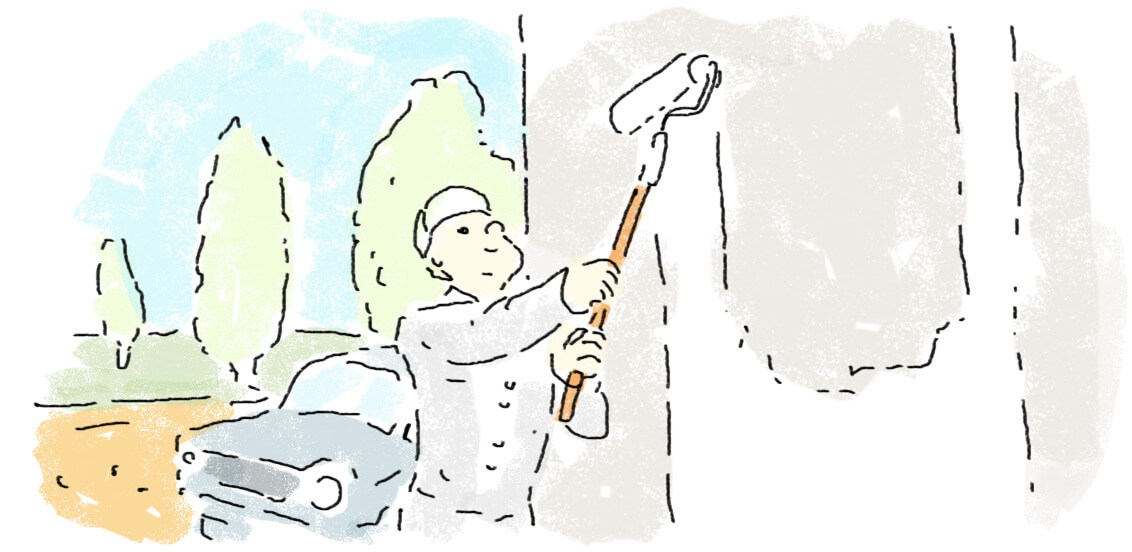Buying Guide
Buying a home is probably the biggest economic decision in a lifetime. An operation that requires attention to every detail.

Details and information about a property for sale

1.-ADVERTISEMENT OF THE SALE OF THE PROPERTY
The advertisement must be clearly visible and free from misunderstanding, and must specify:
• The usable area of the property
• The final price of the property: Any and all items included shall be clearly specified. Otherwise, the purchaser shall be exempted from paying those unincluded fees and taxes and other expenses.
• Information on the economic offer: Any and all outstanding payments shall also be specified, including their interests and conditions. Otherwise, interests shall be paid on the outstanding amount.
2.-NECESSARY INFORMATION FOR THE SALE OF A BRAND NEW PROPERTY
In order to sell a property, the following information must be specified:
• Information on the size and design
• Quality of the construction
• Levels of insulation and soundproofing
• Legal ownership
• Liens and encumbrances on the property
• Conditions of use
• Facilities available near the property
• Fixed expenses on maintenance
• Economic and financing conditions of the offer
• Taxes on the property
• Information on administrative licences or authorizations
• Details on the construction and statutory guarantee (for finished properties)
• Possibility for the purchaser to request the complete technical and executive project of the building to the developer.
Agreement between the buyer and the seller

3.- EARNEST MONEY OR DOWN PAYMENT:
Whenever there is an interest in purchasing a property, the potential purchaser may deliver an amount of money to the seller as a deposit. This delivery can be performed under different legal figures:
In any case, the amount of money delivered to the seller shall be specified in writing, together with the personal information of both the purchaser and the seller, the information and characteristics of the property, the amount of money being delivered as earnest money or down payment (applied to the final purchase price), liens and encumbrances affecting the property and the date on and conditions under which the deed of sale shall be executed.
If we talk about a reservation, we are making reference to an agreement providing for an option to buy: the purchaser chooses whether to buy the property or not within a specified time period.
If, on the other hand, we talk about down payment, the parties commit themselves to purchase and sell.
Another option is to sign an earnest money agreement (provided for under Section 1454 of the Spanish Civil Code), under which neither party is obliged to buy or sell. However, if at the end the purchaser is not willing to buy, the amount of money given is lost for the benefit of the seller and, if the seller is not willing to sell, the purchaser receives the amount doubled.
Buying a new home

A.- DOCUMENTS NECESSARY FOR THE EXECUTION
The execution of a purchase and sale agreement shall be made before a Notary Public, providing all the necessary documents related to the property.
A.1.- Requirements for the purchase of an off-plan property (pre-construction project):
In order to execute a purchase and sale agreement and be able to start charging for an off-plan property project, the developer shall fulfill these requirements:
- Possessing a valid building permit;
- Possessing the title evidencing that the plot on which the construction project has been planned is available;
- Drafting the complete technical project to be implemented in the construction;
- Specifying the estimated date of completion of the project and delivery of the finished properties;
-
Specifying the law applying to the construction project, including:
- State Subsidized Housing law applying to the property;
- Easement rights, charges and encumbrances affecting the properties;
- Economic and financing conditions of the purchase and sale;
- The property ratio over the whole building;
- The draft of the bylaws of the future Community of Owners or, if they are still pending, a document stating that they have not been written yet.
Apart from these requirements, once the construction is finished and before the actual delivery of the property to the purchaser, the requirements related to the purchase of a finished property shall also be satisfied.
A.2.- Requirements for the execution of the deed of sale of a finished property:
In order to execute a purchase and sale agreement and be entitled to receive any amount of the purchase price of a finished property, the following requirements shall be fulfilled:
- Having provided sufficient guarantee;
- Having all the utilities of the building in full operation, according to the applicable regulations;
- Having complied with the conditions related to the building permit;
- Having executed the relevant Building Record;
- Having allocated each share of the mortgage loan, if any, to the different units – apartments – of the building;
- Having a certificate signed by experts on the suitability of the materials, the construction solutions and the correct installation of the utility networks, as well as on the professionalism and good faith of the workers and on the accuracy of the date of finalization of the construction.
A.3.- Certificate of Occupancy and Building Record:
The Certificate of Occupancy evidences the property’s compliance with applicable building codes and other laws, and indicates it to be in a condition suitable for occupancy. It expires 15 years after its issuance, date after which a new certificate of occupancy shall be required.
The Certificate of Occupancy is an essential requirement for registering the utility services (water, electricity and gas).
The Building Record is the document that encompasses the essential information of the relevant property, including:
- Information related to the identification of the building;
- Information on the parties intervening in the construction project;
- The applicable law and guarantees;
- Technical details;
- Maintenance works performed on the building;
- Any situation worth mentioning;
- Reforms and rehabilitation projects that may be performed.
If there is an individual purchaser of the whole building, the developer shall submit the Building Record to such purchaser at the time of delivering the property. If there is more than one purchaser, the Building Record shall be submitted to the president of the Community of Owners. In the event the property is affected by a regime of horizontal property, the submission shall be made at the time of constituting the community.
The seller shall deliver both the Certificate of Occupancy and the Building Record to the purchaser. Otherwise, the purchaser is entitled to file the corresponding complaint with the Spanish Department of Consumer Protection (in Spanish, ‘Subdirección General de Consumo’), which may result in the payment of a fine by the party that acted in breach of contract.
B.- NOTARIAL DEED OF SALE
Although the best option is that the Agreement of Purchase and Sale be drafted by both parties (purchaser and seller), most of the times it is written solely by the seller, whereas the purchaser accepts all the terms and conditions without any objections (standard-form agreement). That is why before executing the agreement, it is recommended that the purchaser takes a copy of it to a counselor in order to get professional advice on the terms and conditions of such agreement.
At the time of the execution of the Deed of Sale, or before the actual delivery of the property, the following documents may be required:
- The Certificate of Occupancy;
- The bylaws and the regulations of the Community of Owners (if the regime of horizontal property applies) and a record of any bank account related to the property, evidencing the due and full payment of common expenses;
- A blueprint of the property, showing the electricity, water, heating, communications and any other network, if any, as well as the surveillance services of the building;
- A description of the materials used in the construction, including a clear reference to the isolation and soundproof systems;
- A detailed list of technicians, constructors and industrialists that took part in the project, its management and performance;
- Any guarantees of the property and its elements, together with a reference to the guarantor, the beneficiary of the guarantee and his or her rights, as well as the duration of it;
- Any documents related to the mortgage, if any;
- The list of utility companies, including their business domiciles and any documents necessary for their contracting;
- The Building Record (to the president of the Community of Owners).
If the developer objects to the delivery of any of these documents, it is recommended to state such objection in writing, either in the purchase and sale agreement of in a separate document. This will be necessary at the time of filing the relevant complaint with the Spanish Department of Consumer Protection, which may result in the payment of a fine by the party that acted in breach of contract.
As regards the Notarial Deed of Sale, this document constitutes an essential requirement at the time of registering the transaction with the corresponding Property Registry, thus becoming effective and enforceable against third parties.
C.- EXPENSES, GUARANTEES AND RESPONSIBILITIES
C.1.- Taxes:
Value Added Tax (VAT)
It is paid by the seller in the event of the sale of a brand new property, that is, whenever the property is delivered by the developer or constructor directly to the purchaser.
The rate is 4% over the purchase price stated on the Deed of Sale (reduced VAT for transactions made until December 31st, 2012. In the event there is no extension, the rate is 8% as from January 1st, 2013). On the Canary Islands, this tax is replaced by IGIC (Canary Islands General Indirect Tax) with a rate of 4.5%. If there is a transaction between individual parties, there is no VAT.
Spanish Tax on Documented Legal Transactions (IAJD)
It is levied on the execution of public instruments (notarial, commercial and administrative documents) in real estate transactions that are affected by VAT.
It is paid by the purchaser of the property and the rate goes from 0.75% to 2%, depending on the Autonomous Community.
Tax on Onerous Property Transfer
The tax rate for this type of transfer is 1% and is levied whenever there is a request for a mortgage loan to finance the purchase of a brand new or resale property.
Plusvalia Property Tax or Tax on the increase in the value of urban land
This is a local (municipal) tax charging the increase in the value of urban land from its purchase until the time of its sale. Plusvalia Tax is paid by the seller. In the event of inheritance or donation, this tax is paid by the beneficiary of those transactions.
Property Tax (IBI)
It is a local (municipal) tax levied on the value of urban and rural land, paid by the owner of the property on January 1st.
Transfer Tax on Resale Properties (ITP)
It is levied on the transfer of second hand or resale properties (brand new properties are affected by VAT). It is paid by the purchaser of the property and its rate goes from 8% to 10%, depending on the Autonomous Community.
C.2.- Other Expenses
For the purchaser:
- Total purchase price of the property;
- Notary Public fees and registration with the Property Registry;
- Agent fees (filing of documents with the Spanish Tax Office and the Property Registry, etc).
For the seller:
- Tax on the increase in the value of urban land.
The seller shall not transfer the expenses of the mortgage obtained to finance the building, nor those resulting from the horizontal division regime, if applicable, to the purchaser.
C.3.- Brand new property guarantee:
Before selling the property, the developers shall grant a guarantee – in favor of the purchasers – against any defects on the construction and subsequent defects affecting the property directly.
This constitutes a guarantee against any material defect that may appear during a period of ten years as from the date of purchase, including compensation for material damages to the building and defects resulting from or affecting the foundation, props, beams, concrete slabs, load-bearing walls or any other structural element of the building and compromising directly the mechanical impedance and stability of the building.
C.4.- Responsibility for the state of the brand new property:
Individuals and legal entities intervening in the building process are accountable to the owners and third parties who may purchase the properties as from the date of delivery of the building:
- During a period of 10 years as from the delivery, for any material defect affecting the building resulting from defects in the foundation, props, beams, concrete slabs, load-bearing walls or any other structural element of the building and compromising directly the mechanical impedance and stability of the building.
- During a period of 3 years as from the delivery, for any material defect of the building resulting from defects in construction elements or defective installation and leading to a breach of the occupancy regulations.
- During a period of one year as from the delivery, for any material defect resulting from construction flaws affecting the materials of the finishes and the construction itself.
Buying a second-hand home

A.- DOCUMENTS NECESSARY FOR THE EXECUTION
The execution of a purchase and sale agreement shall be made before a Notary Public, providing all the necessary documents related to the property.
A.1.- Legal and registry situation:
It is necessary to go to the Property Registry where the property is located in order to check all the documents related to it are free from defects, especially as regards:
• The ownership of the property to be purchased;
• Its total area, characteristics and the percentage that the property ratio over the whole building;
• The existence of liens and encumbrances, including mortgages, seizures, easements, etc.
A.2.- Urban location: It is important to take into account whether the property, or the area where it is located, is affected by any type of urban plan.
A.3.- Charges over the property:
a) Mortgage loans: if a mortgage loan is obtained over the property, there are two options:
o Paying the mortgage before the execution of the purchase and sale agreement, or
o The purchaser assuming the existing mortgage, whose amount will be deduced from the total purchase price.
b) Taxes: It is necessary to corroborate that the seller has duly paid all the taxes levied on the property, such as the Property Tax (IBI). For such purpose, the owner shall deliver the latest bill evidencing such payment. In the event of lack of payment, the seller shall be responsible of any unpaid amount that may become known during a period of 5 years as from the purchase day.
c) Community expenses: It is also necessary to corroborate that the seller has paid the community expenses and fees. The seller shall deliver a certificate signed by the administrator of the building, or by the president of the Community of Owners, evidencing the payment in full of the community expenses. In the event of lack of payment, the seller shall become directly responsible for the fees of the Community of Owners payable during the latest, ongoing year and those payable during the calendar year before that one, regardless of the current owner of the property.
A.4.- Certificate of Occupancy: The seller shall deliver the Certificate of Occupancy to the purchaser, even when the transaction involves a resale property. The Certificate of Occupancy evidences the property’s compliance with applicable building codes and other laws, and indicates it to be in a condition suitable for occupancy.
It expires 15 years after its issuance, date after which a new certificate of occupancy shall be required.
The certificate of occupancy is an essential requirement for registering utilities (water, electricity and gas)
If the seller fails to provide the Certificate of Occupancy, or such certificate is no longer valid, a new Certificate of Occupancy is necessary. In order to get it, the Association of Architects or Technical Architects can provide you with a list of professionals in charge of this kind of procedure. The seller shall pay any expenses arising from the new Certificate of Occupancy.
A.5.- Utilities: Whenever a resale property is sold with the operating services of water, electricity and gas, it is necessary to check the payment of such services has been duly performed. That is why the seller shall deliver to the purchaser the latest bills evidencing such payments. However, it may be also good to check that the consumption shown on such bills corresponds to the one shown on the meters, as there may be differences in the measures.
When the purchase and sale process is in charge of a real estate agency, such company shall be in charge of delivering the already mentioned documents with the information required.
B.- NOTARIAL DEED OF SALE
Once the earnest money, down payment or the private purchase and sale agreement have been delivered, the next step is to execute the deed of sale before a Notary Public.
As regards the Notarial Deed of Sale, this document constitutes an essential requirement at the time of registering the transaction with the corresponding Property Registry, thus becoming effective and enforceable against third parties.
It is also a guarantee for the purchaser since it evidences the actual date of purchase, the final price and the rest of the terms and conditions of the purchase and sale
C.- EXPENSES, GUARANTEES AND RESPONSIBILITIES
C.1.- Taxes:
Onerous Property Transfer
The tax rate for this type of transfer is 1% and is levied whenever there is a request for a mortgage loan to finance the purchase of a brand new or resale property.
Plusvalia Property Tax or Tax on the increase in the value of urban land
This is a local (municipal) tax charging the increase in the value of urban land from its purchase until the time of its sale. Plusvalia Tax is paid by the seller when the sale is successful. In the event of inheritance or donation, this tax is paid by the beneficiary of those transactions.
Property Tax (IBI)
it is a local (municipal) tax levied on the value of urban and rural land, paid by the owner of the property on January 1st.
Transfer Tax on Resale Properties (ITP)
It is levied on the transfer of second hand or resale properties (Brand new properties are affected by VAT). It is paid by the purchaser of the property and its rate goes from 8% to 10%, depending on the Autonomous Community.
C.2.- Other Expenses
For the purchaser:
- Total purchase price of the property;
- Notary Public fees and registration with the Property Registry;
- Agent fees, if any.
For the seller:
- Tax on the increase in the value of urban land. Regardless of the parties agreeing otherwise, this tax shall be paid by the seller.
C.3.- Responsibility for the state of a second hand property:
The seller of a property is responsible for any hidden defects that may appear during a period of six month as from the delivery date.
Considering that, before the purchase and with the aim of making sure that the property is free from certain defects, it is recommended that the purchaser requests a study on the state of the property, especially if it can be concluded that materials originating such defects have been used in the construction of the property (such as wooden beams that may cause the appearance of termites, signs of degeneration of cement, etc).